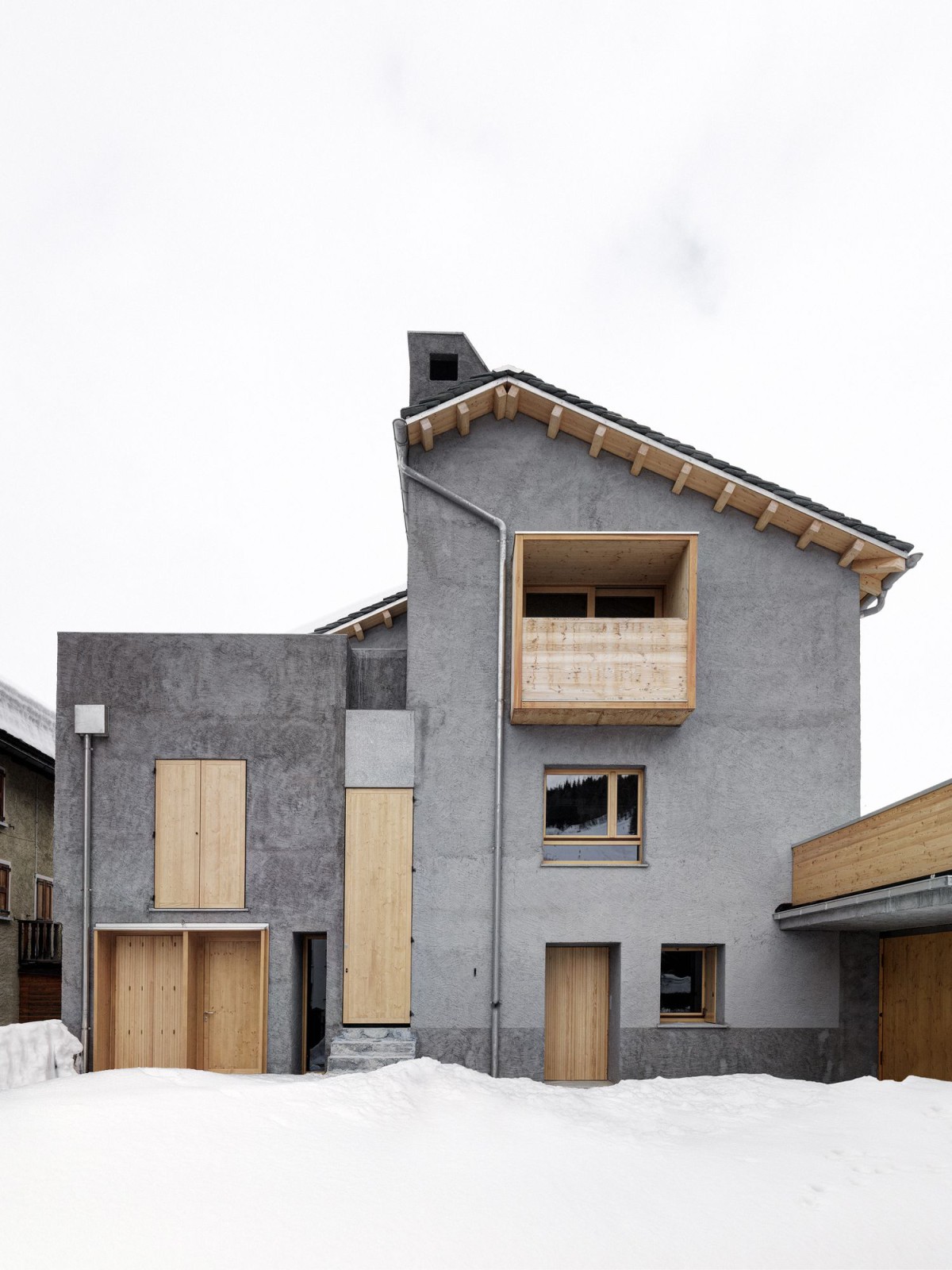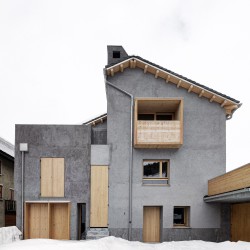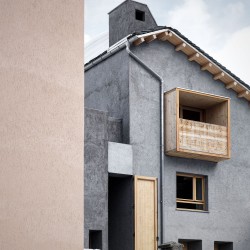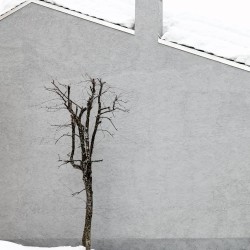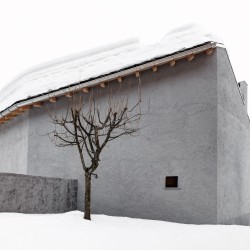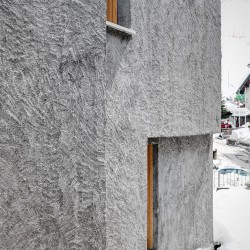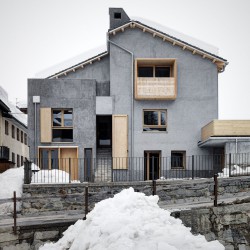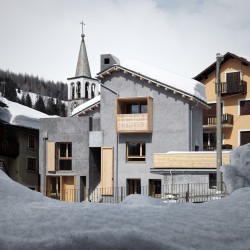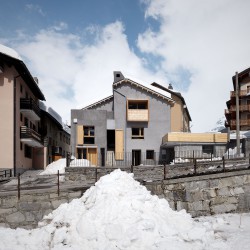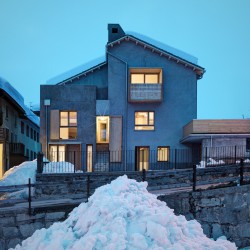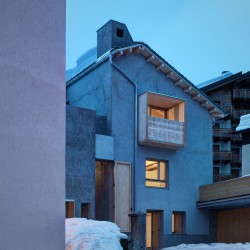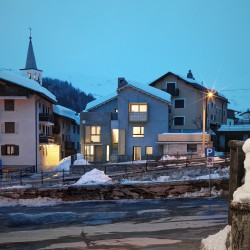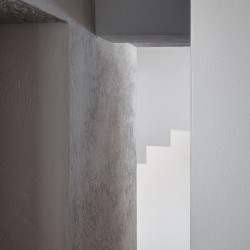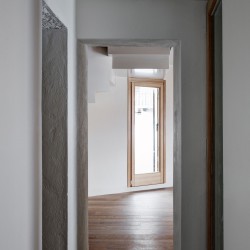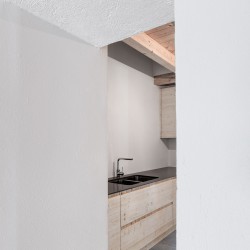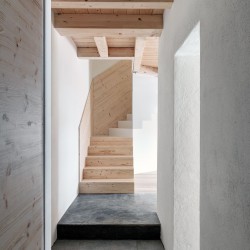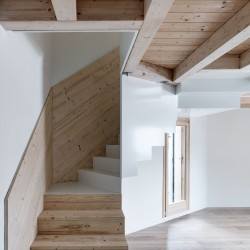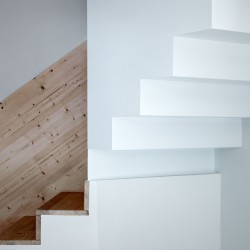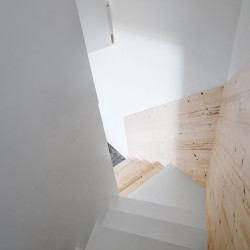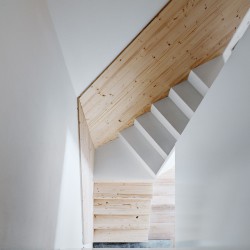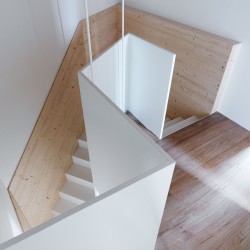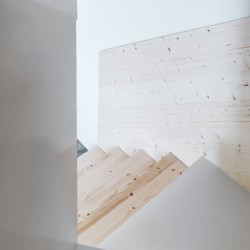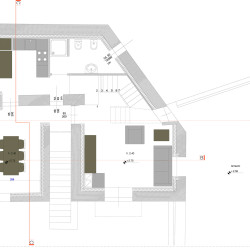ES arch enricoscaramelliniarchitetto . photos: © Marcello Mariana . + divisare
It is a project on a rural building of the ‘20s-‘30s flanked by a building dating back to the ’70s, not at all consistent with the context. The existing volumes have a facade facing south while the rest of the building borders with other properties and is therefore completely closed. The theme of the contiguity of the volumes, also traceable in spontaneous rural architecture, becomes key in the design process. This proximity means that the perception of buildings is absolutely different depending on the point of view. Very close volumes seem to merge into a single entity.
_
The main intent is to build the project by adding as little as possible. The project takes note of the definition of the two volumes; on the one hand, the tall building with the two-pitched roof, on the other, the low building with the roof terrace. The project builds a linear parapet that closes the rectangular geometry of the facade.Close to the opening where the access stairs to the first floor are inserted, we worked with the desire to make clear the slight separation between the two volumes.
The retreat of the parapet for the width of the staircase and the partial wood cladding become functional to the perception of the measured detachment.
A new wooden box protrudes to a small extent on the second floor, clearly defining the composition of the façade. The main theme of the project is to transform elements that are considered disturbing in quality elements, returned to the community with new values and meanings.
The project is superimposed on the existing building, operating a limited set of modifications, in such a way as to return a new, unitary and balanced image.
A forgotten building is regenerated through architecture; the landscape is transformed through the acquisition of a measured intervention, charged with new meanings.
_
Location: Madesimo (Sondrio), latitude 46.26.04N longitude 09.21.27E
Year: 2017
Client: private
Surface/dimensions: 243 m2
Project leader: Arch. Enrico Scaramellini
Consultants: Studio associato Bianco & Mastai, studio H2o, Arch. Francesco Manzoni
Si tratta di un progetto su un edificio rurale degli anni 20-30 affiancato ad una costruzione risalente agli anni ’70, per nulla coerente con il contesto. I volumi esistenti hanno una facciata aperta verso sud mentre il resto dell’edificio confina con altre proprietà ed è quindi totalmente chiuso. Il tema della contiguità dei volumi costruiti, rintracciabile anche nell’architettura rurale spontanea, diventa centrale nel processo progettuale. Tale prossimità fa si che la percezione degli edifici sia assolutamente differente a seconda del punto di vista. Volumi molto vicini sembrano fondersi in un’unica entità. L’intento principale è quello di costruire il progetto aggiungendo il meno possibile. Il progetto prende atto della definizione dei due volumi; da una parte, l’edificio alto con la copertura a due falde, dall’altra, l’edificio basso con la terrazza in copertura. Il progetto costruisce un parapetto lineare che chiude la geometria rettangolare della facciata. In prossimità dell’apertura in cui si infilano le scale di accesso al piano primo, si è lavorato con la volontà di rendere chiaro il lieve distacco tra i due volumi. L’arretramento del parapetto per la larghezza della scala e il parziale rivestimento in legno diventano funzionali alla percezione del misurato distacco. Una nuova scatola lignea fuoriesce in misura ridotta al piano secondo, definendo in maniera chiara la composizione della facciata. Il tema principale di progetto è quello di trasformare elementi che sono considerati di disturbo in elementi di qualità, restituiti alla comunità con nuovi valori e significati. Il progetto si sovrappone all’edificio esistente, operando un insieme limitato di modifiche, in modo tale da restituire una nuova immagine, unitaria e compositivamente equilibrata. Un edificio dimenticato viene rigenerato attraverso l’architettura; il paesaggio si trasforma attraverso l’acquisizione di un intervento misurato, carico di nuovi significati.

